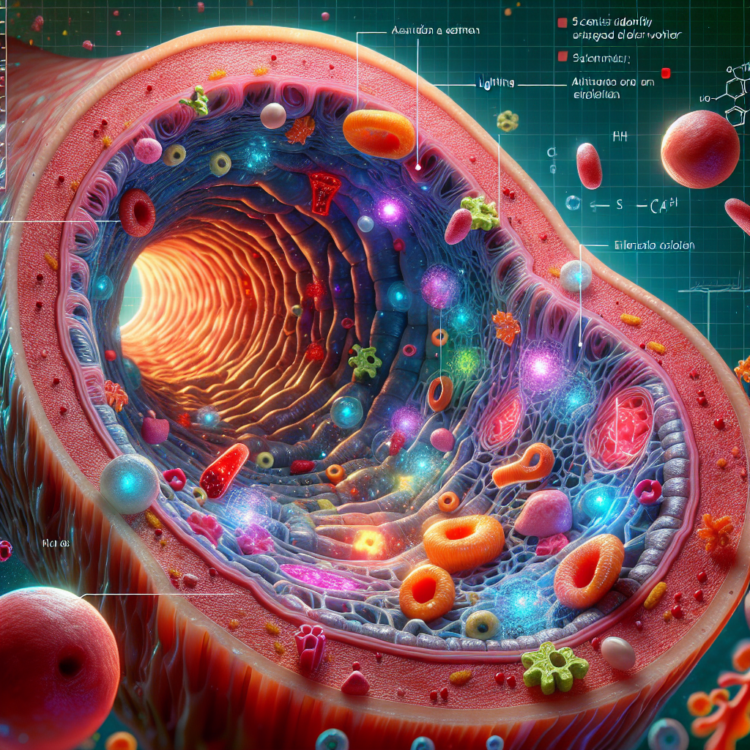Scientists Identify Airway Cells That Sense Aspirated Water and Acid Reflux
The new work by UCSF researchers could lead to interventions to prevent pneumonia or treat certain types of chronic cough.
Scientists Identify Airway Cells That Sense Aspirated Water and Acid Reflux
The new work by UCSF researchers could lead to interventions to prevent pneumonia or treat certain types of chronic cough.
When a mouthful of water goes down the wrong pipe – heading toward a healthy person’s lungs instead of their gut – they start coughing uncontrollably. That’s because their upper airway senses the water and quickly signals the brain. The same coughing reflex is set off in people with acid reflux, when acid from the stomach reaches the throat.
Now, UC San Francisco scientists have identified the rare type of cell responsible for initiating these reactions. In a study published April 19, 2024, in Science, they detailed exactly how the cells, called laryngeal and tracheal neuroendocrine cells, can sense water or acid in the upper airway and pass the information along by releasing chemical messengers that activate nerves leading to the brain.
The research could contribute to a better understanding of how these coughing reflexes diminish with aging and disease, or lead to interventions to prevent pneumonia or treat certain types of chronic cough.
“This study gives us a lot of insight into not only how our bodies are protecting our airways in this profoundly surprising way, but also more broadly how internal organs can act as gatekeepers to the outside world,” said David Julius, PhD, the senior author of the new paper, professor and chair of physiology at UCSF, and winner of the 2021 Nobel Prize in Physiology or Medicine.
Neuroendocrine (NE) cells are found throughout the respiratory and digestive systems and have dual functions: to produce and release hormones, like endocrine cells, and to send and receive electric messages, like neurons.
Cells respond to water and acid
“We knew something about what these cells were doing in the lungs, but not the upper airway,” said Laura Seeholzer, PhD, a UCSF postdoctoral fellow in the Julius lab who led the new work. “The only reason we even knew they existed in the larynx is because some people get very rare neuroendocrine tumors in the larynx.”
Seeholzer developed methods to isolate the tiny and very rare NE cells from the lungs, larynx and upper and lower trachea and characterize the molecular details of the different groups of cells. She studied what genes were active in each cell, as well as what stimuli caused the cells to release chemical signals. Unlike NE cells from the lungs, those found in the trachea and larynx did not respond to pressure changes, she found. But the airway NE cells did release signals in response to water and acid.
In isolated tissues from mice, Seeholzer also demonstrated how the NE cells could pass these messages directly to the sensory neurons that lead to the brain. Then, she showed that activating the NE cells in living mice made the animals swallow and cough, which are important reflexes for protecting our lungs. On the flip side, when mice completely lacked NE cells, the animals did not respond to water in their airways.
“We really wanted to know the details of what makes these cells tick,” Julius said. “No one had ever showed before that these cells talk to sensory neurons, and we wanted to follow the whole message trail.”
A potential treatment for chronic cough
Seeholzer said the new findings suggest that the larynx and trachea NE cells are analogous to taste buds or ear hairs; they are not nerve cells themselves, but they are connected to nerves that send sensory information to the brain.
“If you’ve ever had the experience of aspirating water or acid reflux, you know that both of these things are incredibly painful; you immediately cough and gag and try to clean out your airway,” Seeholzer said. “Now we better understand how the body triggers that.”
With aging, the so-called cough reflex often becomes less sensitive, making older adults as well as those with certain diseases more prone to aspirating fluid into their lungs and developing pneumonia. The new understanding of how NE cells relate to the cough reflex could eventually lead to ways of increasing sensitivity and preventing this aspiration. Targeting the cells could also treat the chronic cough associated with acid reflux in some people.
“More work is needed to better understand how the NE cells are potentially changing with disease, smoking, or aging,” Seeholzer said. She is collaborating with UCSF clinicians to undertake this next phase of the research.
Funding: This work was supported by a Helen Hay Whitney fellowship and a UCSF IRACDA Scholars fellowship (K12GM081266) as well as grants from the National Institutes of Health (R35 NS105038) and the UC Tobacco-Related Disease Research Program (P0558042). David Julius is an advisor for Rapport Therapeutics.
About UCSF: The University of California, San Francisco (UCSF) is exclusively focused on the health sciences and is dedicated to promoting health worldwide through advanced biomedical research, graduate-level education in the life sciences and health professions, and excellence in patient care. UCSF Health, which serves as UCSF’s primary academic medical center, includes top-ranked specialty hospitals and other clinical programs, and has affiliations throughout the Bay Area. UCSF School of Medicine also has a regional campus in Fresno. Learn more at https://ucsf.edu, or see our Fact Sheet.
###
Follow UCSF
ucsf.edu | Facebook.com/ucsf | YouTube.com/ucsf
Journal
Science
Article Title
Neuroendocrine cells initiate protective upper airway reflexes
Article Publication Date
19-Apr-2024




